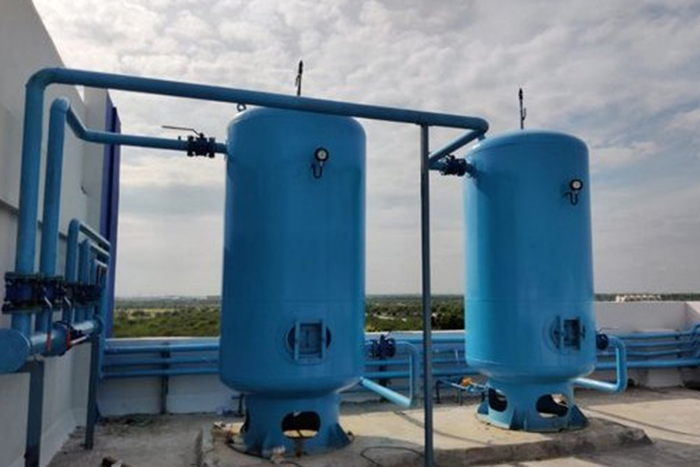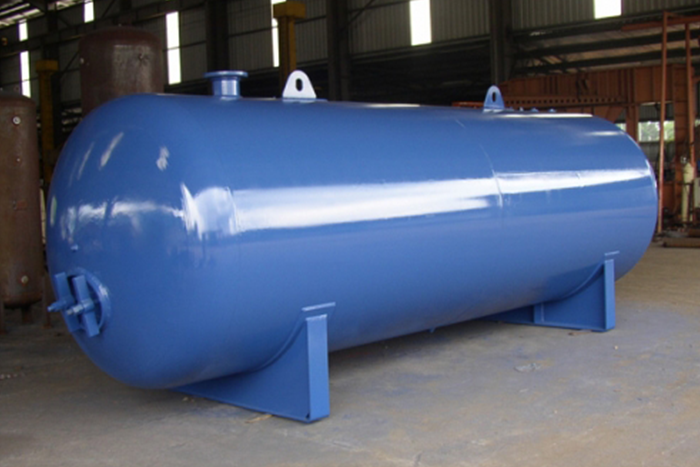

An Air Receiver Tank is an essential component in compressed air systems, particularly in steam boiler houses, where reliable and stable compressed air is needed for various operations. The air receiver acts as a buffer between the compressor and the demand side, ensuring smooth operation, improved efficiency, and protection of downstream equipment.
This article explores the purpose, design considerations, and selection criteria for air receiver tanks in steam boiler applications.
1. What is an Air Receiver Tank?
An air receiver tank is a pressurized vessel used to store compressed air before it is used in a system. In a steam boiler house, compressed air is critical for various applications such as:
- Boiler instrumentation
- Pneumatic actuators and valves
- Fuel atomization systems
- Purge air systems
- Control systems and interlocks
2. Uses of Air Receiver Tank in Boiler House
1. Pressure Stabilization
- Smooths out pressure fluctuations caused by variable air demand.
- Maintains consistent air pressure for sensitive instrumentation.
2. System Efficiency
- Reduces compressor cycling, thereby minimizing energy consumption and wear.
- Acts as a buffer during peak demand or compressor failure.
3. Moisture Separation
- Allows compressed air to cool, promoting water condensation.
- Moisture can then be drained, reducing water content in the air system.
4. Emergency Backup
- Stores air for short-term use in case of power/compressor failure, ensuring critical boiler operations continue briefly.
3. Types of Air Receiver Tanks
| Vertical | Space-saving design, easier drainage | Common in boiler rooms |
| Horizontal | Stable and suitable for large capacities | Industrial/commercial plants |
| Surge Tanks | Used to manage large air demand variations | Heavy-duty systems |
4. Selection Criteria for Air Receiver Tanks
Choosing the right air receiver tank depends on several technical and operational factors:
1.Capacity (Volume)
- Typically sized as 6–10 times the compressor flow rate (in CFM or m³/min).
- A larger tank improves pressure stability and allows for better moisture separation.
2. Working Pressure
- Should match or exceed the maximum operating pressure of the compressed air system.
- Common ranges: 7–10 bar (100–150 psi) for boiler house applications.
3. Material of Construction
- Carbon Steel : Most common and cost-effective.
- Stainless Steel : Used in corrosive environments or where air purity is critical.
4. Safety and Maintenance
- Regular inspections and testing are critical. Include pressure relief devices and follow routine pressure checks.
5. Typical Sizing Example
For a 10 HP compressor (~40 CFM):
- Recommended tank size = 240–400 liters (based on 6–10 times flow rate)
- Working pressure = 10 bar (145 psi)
- Vertical design preferred for compact boiler rooms
6. Advantages of Using a Properly Sized Air Receiver Tank
- Energy savings through reduced compressor load cycles
- Improved air quality due to moisture and contaminant separation
- Consistent pressure for critical boiler instrumentation
- Increased lifespan of compressors and pneumatic equipment
Conclusion
An Air Receiver Tank is more than just a storage vessel—it is a vital part of the compressed air system in a steam boiler house. Selecting the correct size, material, and type ensures efficient operation, system protection, and reliable boiler performance. Regular inspection and adherence to safety standards are essential for maintaining system integrity and performance.
